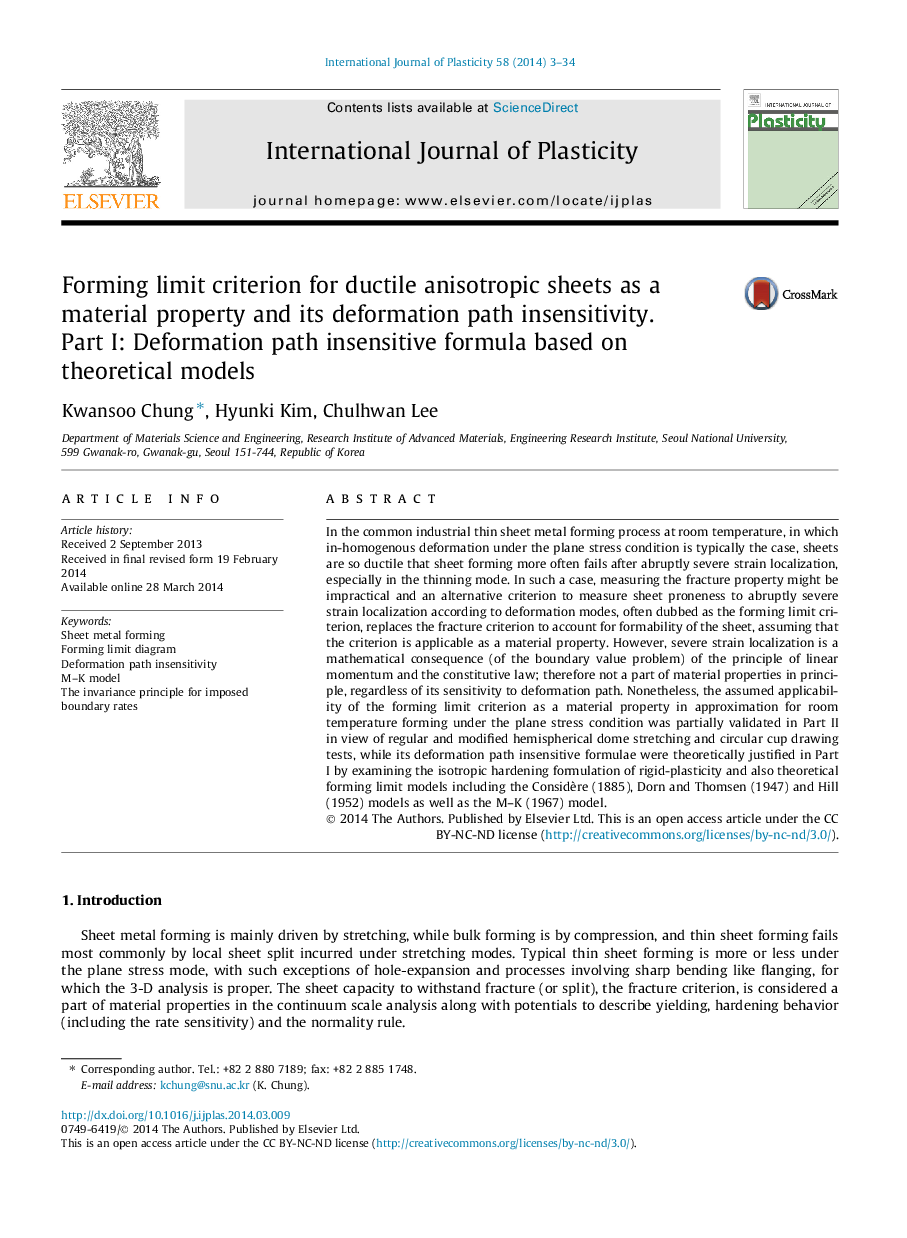| Article ID | Journal | Published Year | Pages | File Type |
|---|---|---|---|---|
| 7174984 | International Journal of Plasticity | 2014 | 32 Pages |
Abstract
In the common industrial thin sheet metal forming process at room temperature, in which in-homogenous deformation under the plane stress condition is typically the case, sheets are so ductile that sheet forming more often fails after abruptly severe strain localization, especially in the thinning mode. In such a case, measuring the fracture property might be impractical and an alternative criterion to measure sheet proneness to abruptly severe strain localization according to deformation modes, often dubbed as the forming limit criterion, replaces the fracture criterion to account for formability of the sheet, assuming that the criterion is applicable as a material property. However, severe strain localization is a mathematical consequence (of the boundary value problem) of the principle of linear momentum and the constitutive law; therefore not a part of material properties in principle, regardless of its sensitivity to deformation path. Nonetheless, the assumed applicability of the forming limit criterion as a material property in approximation for room temperature forming under the plane stress condition was partially validated in Part II in view of regular and modified hemispherical dome stretching and circular cup drawing tests, while its deformation path insensitive formulae were theoretically justified in Part I by examining the isotropic hardening formulation of rigid-plasticity and also theoretical forming limit models including the Considère (1885), Dorn and Thomsen (1947) and Hill (1952) models as well as the M-K (1967) model.
Related Topics
Physical Sciences and Engineering
Engineering
Mechanical Engineering
Authors
Kwansoo Chung, Hyunki Kim, Chulhwan Lee,
